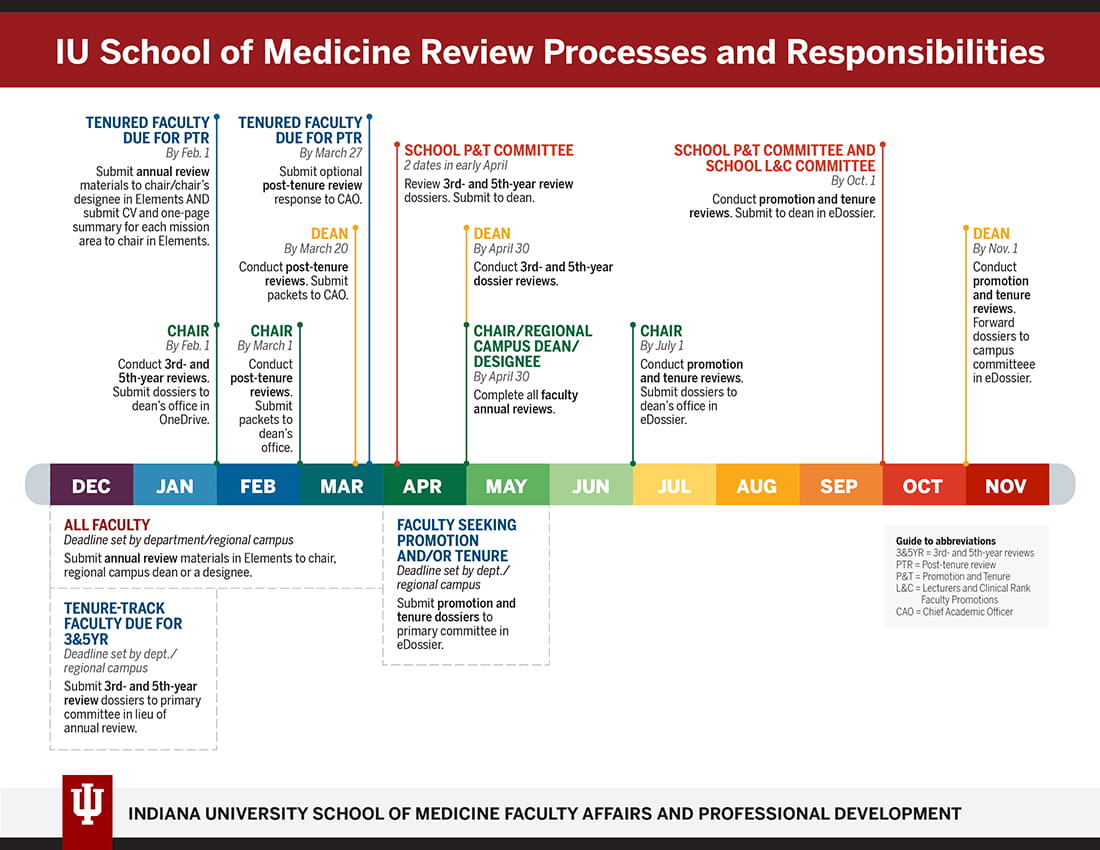Annual reviews are required for full-time faculty, including tenured, tenure-track, clinical-track, scientist-track, librarians, lecturers and affiliate faculty. IU School of Medicine strongly recommends that all other academic appointees also receive an annual review.
While the annual review is a requirement, it also provides an opportunity to provide mentoring and feedback, clarify expectations and increase faculty engagement.

